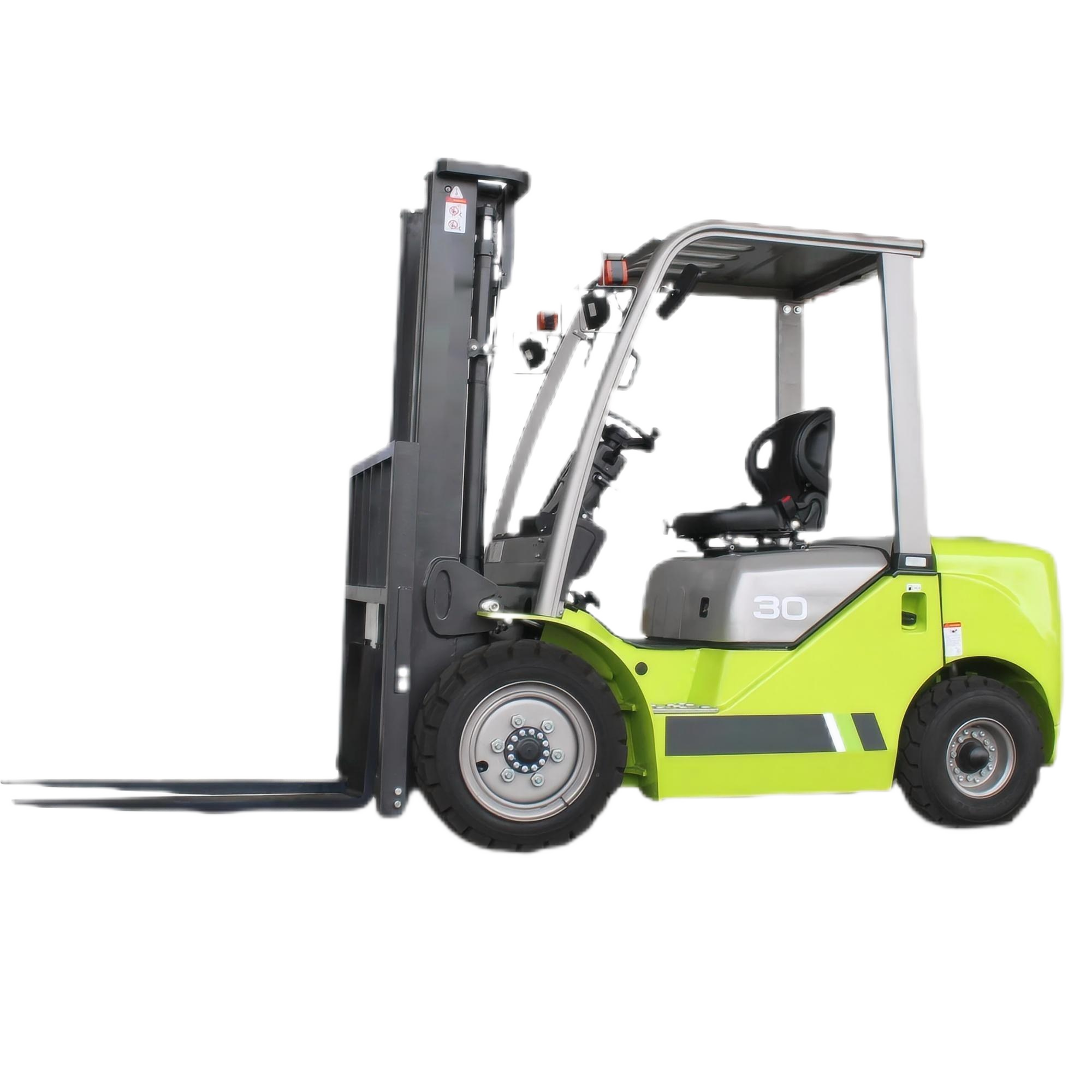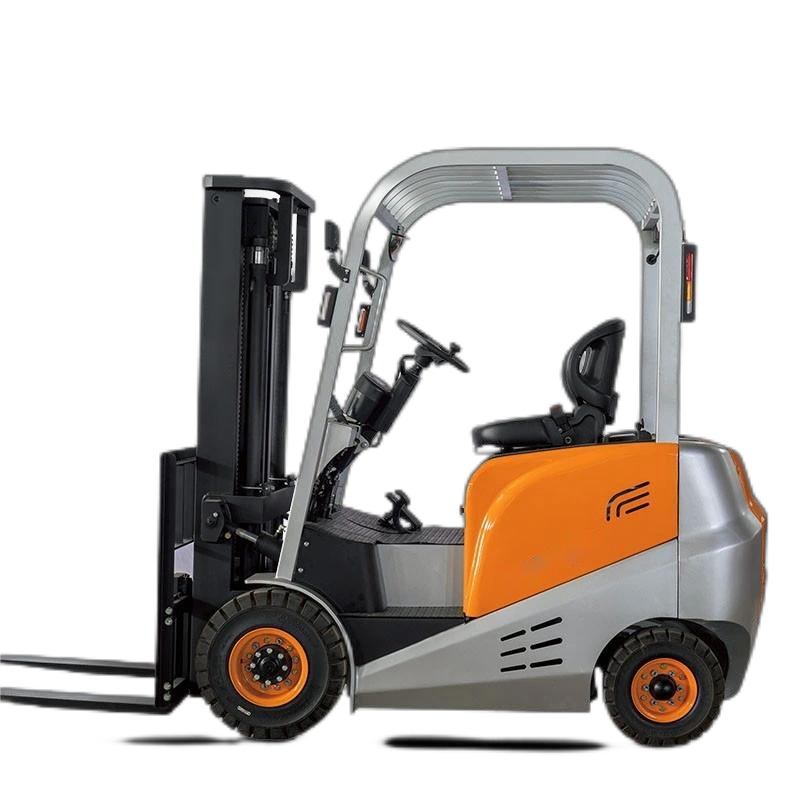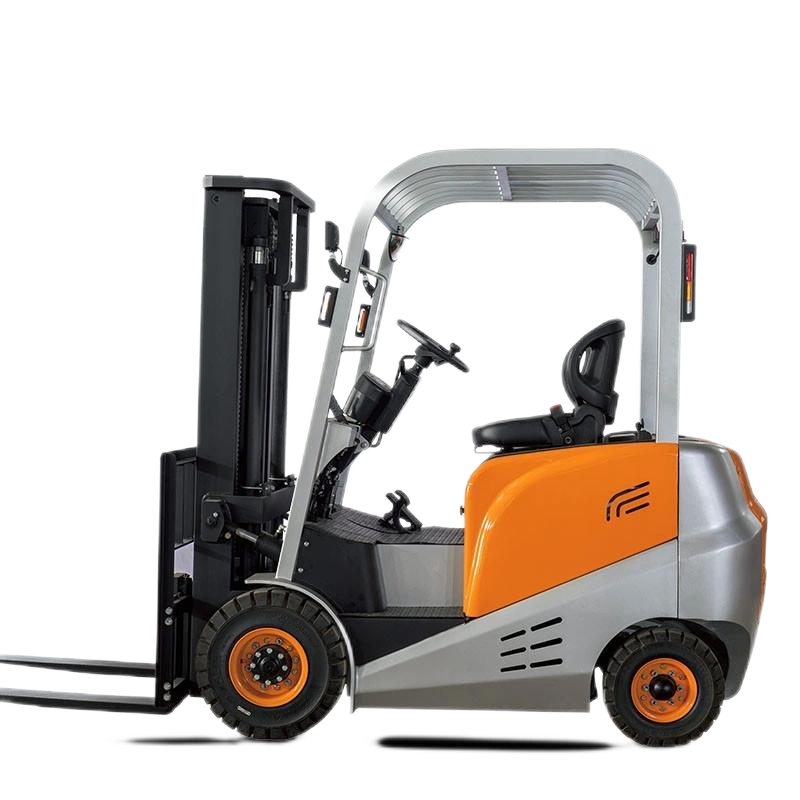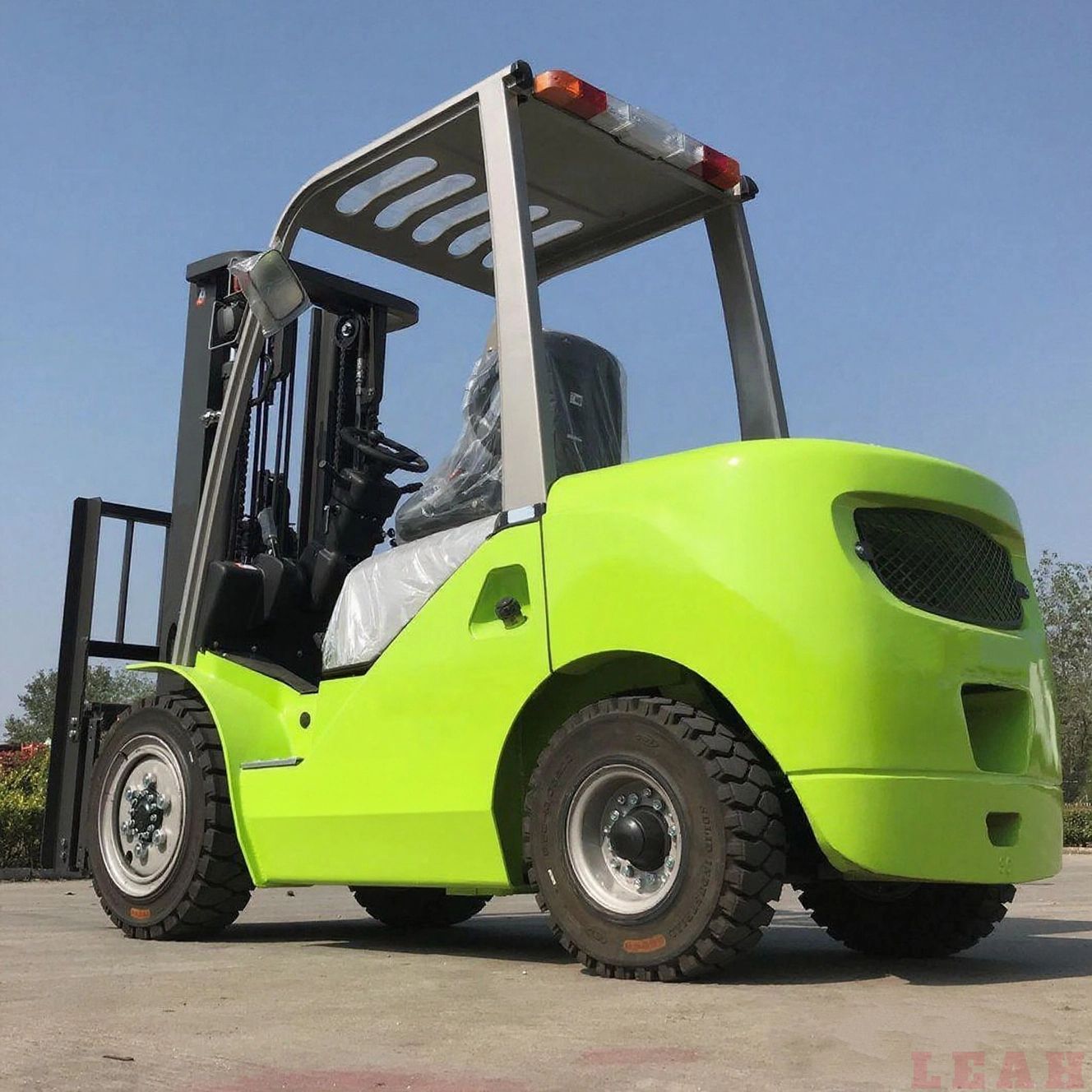An electric forklift is mainly composed of the power system, body structure, working device, electrical system, chassis system, and safety devices. The detailed introduction is as follows:
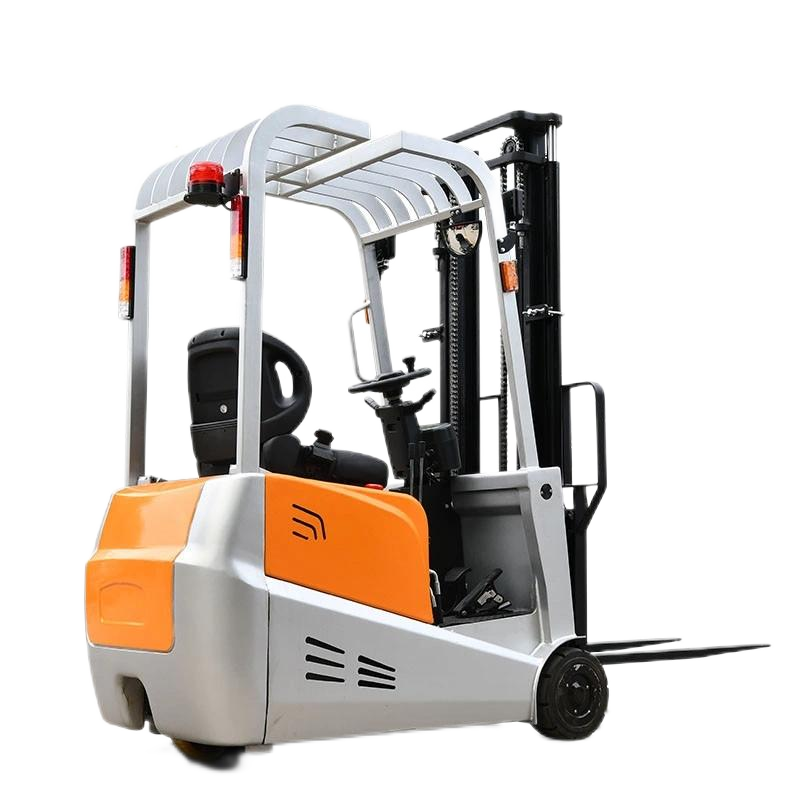
Power System
- Battery: Serves as the energy source of the electric forklift. Common types include lead-acid batteries and lithium-ion batteries, which provide electrical energy for the forklift's operation, lifting, steering, and other functions.
- Lead-acid batteries: Low in cost and mature in technology, but they are heavy, require long charging time, and have relatively weak endurance.
- Lithium-ion batteries: Boast high energy density, fast charging speed, long service life, and low self-discharge rate, yet they are more expensive.
- Motor: Converts the electrical energy from the battery into mechanical energy to drive the forklift's wheels for movement and the hydraulic pump for operation, thereby enabling cargo handling and stacking. Common motors include AC asynchronous motors and permanent magnet synchronous motors. The latter has higher efficiency, greater torque, and better speed regulation performance.
- Transmission: Adjusts the speed and torque of the motor to meet the requirements of different working conditions, ensuring the forklift operates efficiently under varying load and travel speed demands.
Body Structure
- Frame: The main supporting structure of the electric forklift, usually welded from high-strength steel. It is used to install and fix other components such as the power system, working device, and electrical system, and bears various loads during the forklift's operation.
- Counterweight: Generally installed at the rear of the forklift. It balances the torque generated by the cargo when the forks tilt forward, preventing the forklift from tipping over and ensuring stability during operation. Usually made of cast iron or welded steel plates, it accounts for 20%-30% of the total weight of the forklift.
- Operator Cab: The space where the operator controls the forklift, equipped with a seat, control levers, instrument panel, pedals, and other devices. Some electric forklifts used indoors may not have an enclosed cab but only a protective overhead guard to provide a wide field of vision for the operator's convenience.
Working Device
- Mast: Typically composed of inner and outer masts, it forms a vertical lifting guide rail that supports the forks and enables the vertical lifting movement of cargo. There are different types such as standard, two-stage, or three-stage masts, with a lifting height usually ranging from 2 to 6 meters.
- Forks: Metal structures that directly contact and carry cargo, usually consisting of two retractable fork arms. They can move up and down and extend forward and backward to adapt to different cargo stacking heights and widths. The length, width, and spacing of the forks are determined based on the forklift's load capacity and application requirements.
- Tilt Cylinders: Installed between the mast and the frame, they realize the forward and backward tilting of the mast through the action of hydraulic oil, facilitating cargo loading, unloading, and stacking. Generally, the tilt angle of the mast is around ±10°.
- Lifting Chains or Lifting Trusses: Used to connect the mast and the forks, transmitting the thrust of the hydraulic cylinders to the forks to realize the lifting movement of the forks. Lifting chains or trusses need to have sufficient strength and durability to ensure the safe lifting of cargo.
Electrical System
- Controller: The control core of the electric forklift, mainly composed of an IGBT inverter, PLC controller, etc. It is responsible for adjusting the operating speed, direction, and torque of the motor, coordinating the actions between various systems, and implementing various protection functions for the forklift, such as overcurrent protection, overheating protection, and undervoltage protection.
- Sensors: Include power sensors, temperature sensors, height sensors, weight sensors, etc. They are used to monitor various operating parameters and states of the forklift in real time, feeding information back to the controller and instrument panel so that the operator can timely understand the working condition of the forklift and make corresponding operational adjustments.
- Lighting and Signaling Devices: Include headlights, turn signals, brake lights, warning lights, horns, etc. They provide lighting and signal indication during the forklift's operation, improving operational safety and visibility, and ensuring effective communication between the forklift and the surrounding environment and personnel.
Chassis System
- Transmission System: Transmits the power of the motor to the wheels, enabling the forklift to move forward, backward, and steer. It is mainly composed of a gearbox, drive axle, and other components. For some electric forklifts that require frequent starting, stopping, and speed changes, hydraulic transmission or hydrostatic transmission systems may also be adopted to improve transmission efficiency and handling performance.
- Steering System: Generally adopts hydraulic steering, consisting of a steering wheel (or tiller), steering gear, steering device, and steering axle. By operating the steering wheel, the operator transmits steering instructions to the steering gear, which converts rotational motion into linear motion and controls the deflection angle of the wheels through the steering device to realize the forklift's steering operation.
- Braking System: Includes service braking devices and parking braking devices.
- Service brakes are used to decelerate or stop the forklift during travel, usually adopting drum or disc brakes and operated via a brake pedal.
- Parking brakes are used to lock the wheels when the forklift is parked, preventing it from slipping or rolling. They generally use spring brake cylinders, which automatically lock the wheels when power or air pressure is cut off.
Safety Devices
- Load Sensor: Can detect the weight of the cargo in real time. When the cargo weight exceeds the forklift's rated load capacity, the system will issue an alarm to remind the operator, preventing dangers caused by overloading.
- Emergency Stop Button: Generally located on the operator cab or control handle. In case of an emergency, the operator can press the emergency stop button to quickly cut off the forklift's power supply, stopping the forklift immediately to avoid accidents.
- Guardrails and Overhead Guards:
- Guardrails are installed around the forklift's platform to prevent the operator from accidentally falling during operation.
- Overhead guards are located above the operator cab to protect the operator from injuries caused by objects falling from above.





